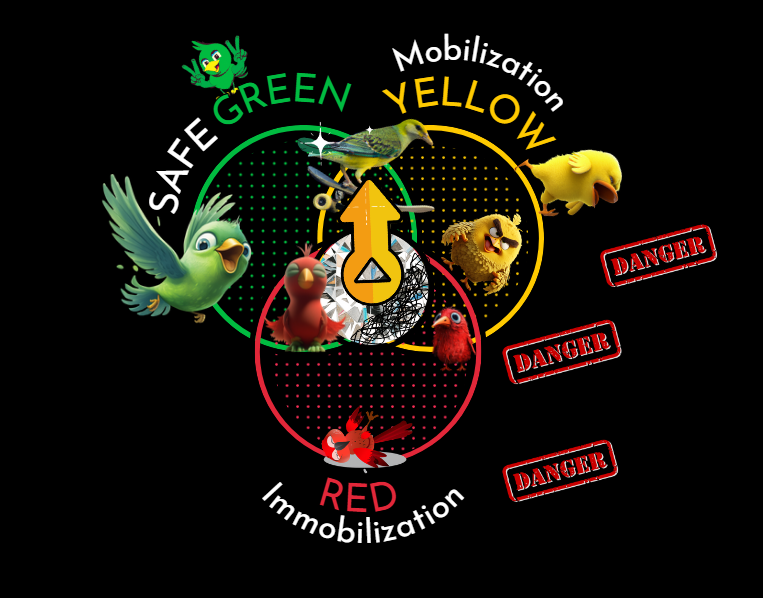The GRACE coaching model utilizes a trauma-informed approach that prioritizes client safety, trust, empowerment, and choice. Before beginning the process, coaches aim to create a safe environment by connecting with the client’s physiology through voice, facial expressions, body language and pacing. We recommend inviting the coachee to do a SEC Check (Somatic, Emotional, Cognitive) to understand the current physiological state of your coachee. This step is also about facilitating the reconnection to Self (Self / Self Energy, Quantum Self, Omniversal Self, etc) if that is part of your coaching practice with this coachee. E.g. Getting the coachee to GREEN / SUPER GREEN.
What’s Going On? SEC Check
What’s going on in your body (SOMATIC)? Is your body revved up (mobilizing sympathetic energy), relaxed, or are you tense, etc?
What is your emotional state (EMOTIONS)?
What are your thoughts like? Racing thoughts, creative thoughts, etc? (COGNITIVE)
Do you notice any personality parts (e.g. inner dialogue)? Are your parts at odds or in alignment? Are you connected to Self?
What physiological state are you in? (For more, watch these videos.)

Coaches attune to signs of activation in the client’s autonomic nervous system using a polyvagal lens and adjust their responses to promote ventral vagal connection. Once rapport and trust have been established, the GRACE model provides a supportive framework for goal-setting, reflection, brainstorming, action and evaluation. At each stage, coaches incorporate opportunities for regulation and make space for the client to evaluate their own internal experience. The overarching aim is to empower sustainable progress for the client through a collaborative, strength-based process that respects nervous system dynamics.
G – Goal Setting
- Clarify the goal of the coaching session
- Understand any larger goals the client is working towards
R – Reflect on Current State
- Assess current state of client across different dimensions (emotional, cognitive, etc.)
- Identify gap between current state and goals
A – Alternatives Exploration
- Brainstorm options to bridge the gap
- Evaluate alternatives against goals and current constraints
- Use D.R.E.A.M. coaching audio (option)
- Use Kata + Havening coaching (option)
C – Call to Action
- Select 1-2 actionable next steps
- Specify exactly what actions will be taken, by when
- Connect actions to larger purpose/meaning for client
E – Evaluate & Encourage
- How will we review progress at next session (get specific)
- Celebrate successes and learnings
- Offer encouragement for continued progress
Note: A slightly different (original) G.R.A.C.E. coaching method was used in past years as part of the SQ Workshop, in combination with the SQ Pocket Coach book. 🙂
